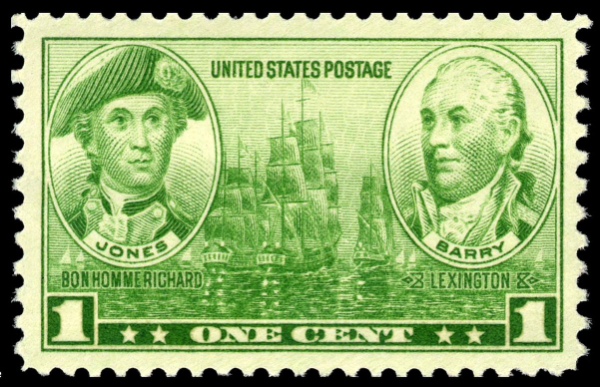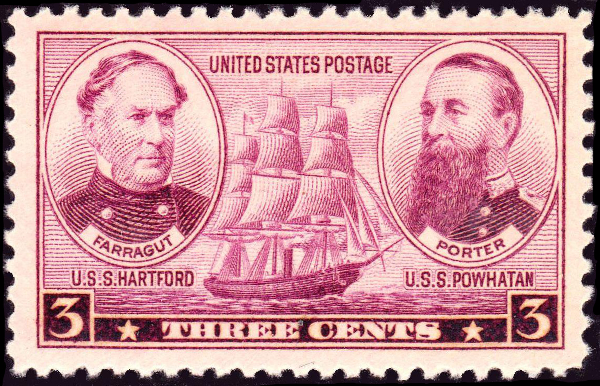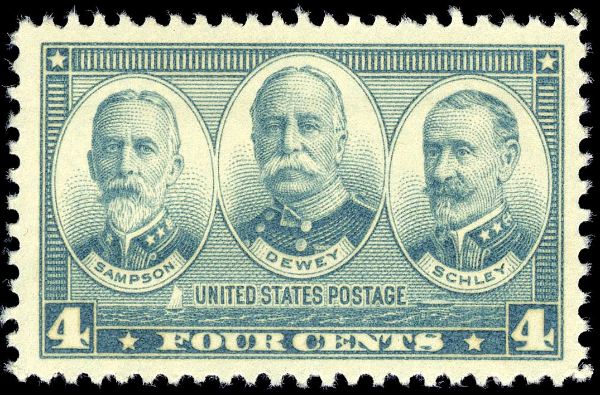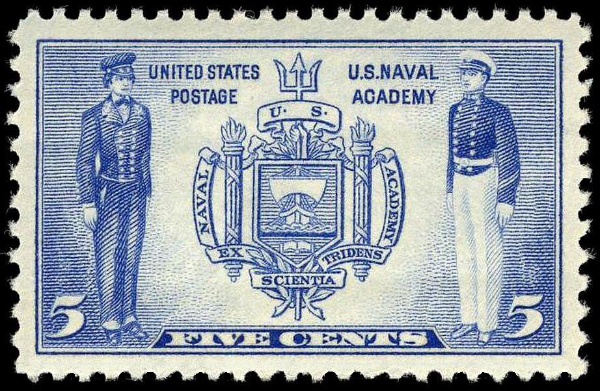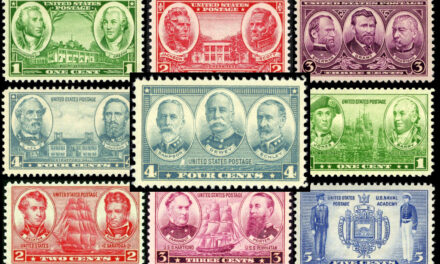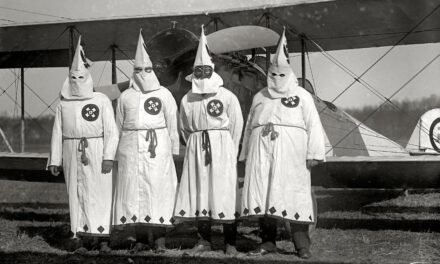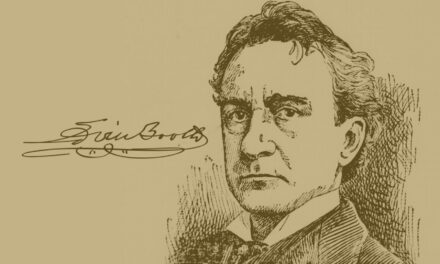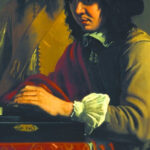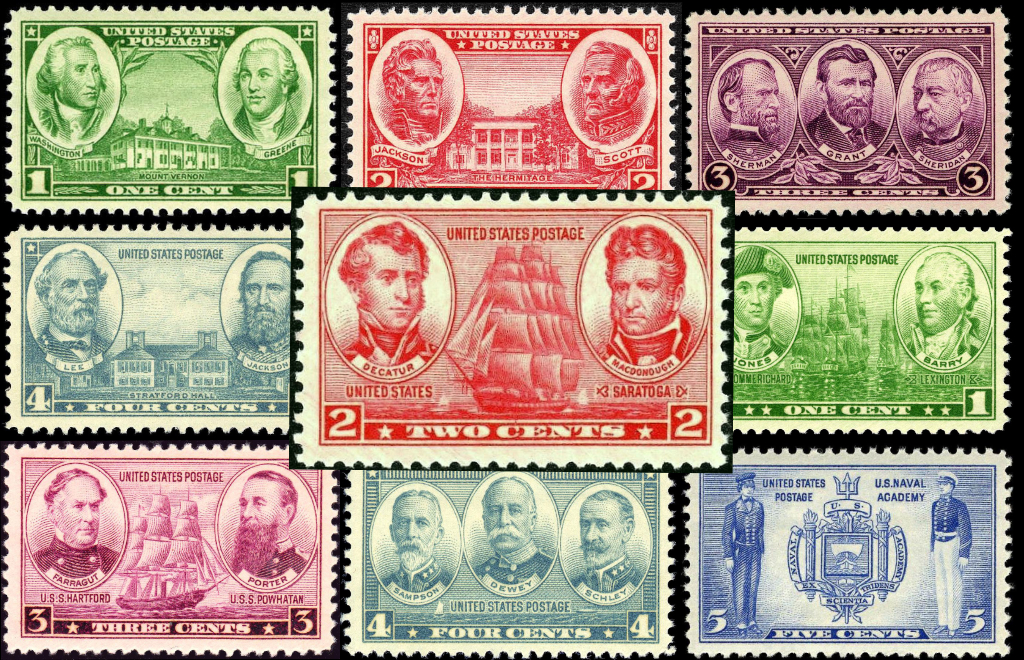
2-Cent 1937 Navy Stamp: Stephen Decatur and Thomas Macdonough
Stephen Decatur and Thomas Macdonough, naval heroes of the War of 1812 and the Barbary Wars, were honored on the two-cent Navy commemorative stamp issued by the United States Post Office in 1937. Under a portrait of each man is the name of a famous ship that he commanded: Decatur’s frigate the United States and Macdonough’s schooner Saratoga, respectively. The stamp also depicts a large Navy warship of the era, most likely the Saratoga.
The stamp is the second in a series of five stamps that were issued between December 1936 and May 1937 to commemorate some of the most important American naval officers of the 18th and 19th centuries. A parallel set of Army commemoratives, including the 2-cent Army stamp featuring Generals Andrew Jackson and Winfield Scott, was issued on the same dates as the Navy stamps.
The Design and Issuance of the 2-Cent 1937 Navy Stamp
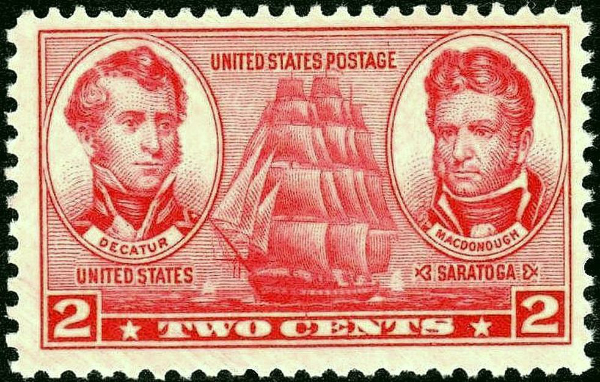
The 2-cent 1937 Navy stamp features Stephen Decatur and Thomas Macdonough, naval heroes of the Barbary Wars and the War of 1812, along with a warship of the era. (U.S. Post Office — U.S. Bureau of Engraving and Printing, Public domain, via Wikimedia Commons)
The Other Stamps in the 1936–1937 Navy Series
Commodore Stephen Decatur (1779–1820)
The son of an American naval officer in the Revolutionary War, Stephen Decatur joined the Navy in 1798 at age 19. He first served as a Midshipman on the USS United States under the command of Commodore John Barry in the undeclared Quasi-War with France from 1798 to 1800. In 1799, Decatur was promoted to Lieutenant.
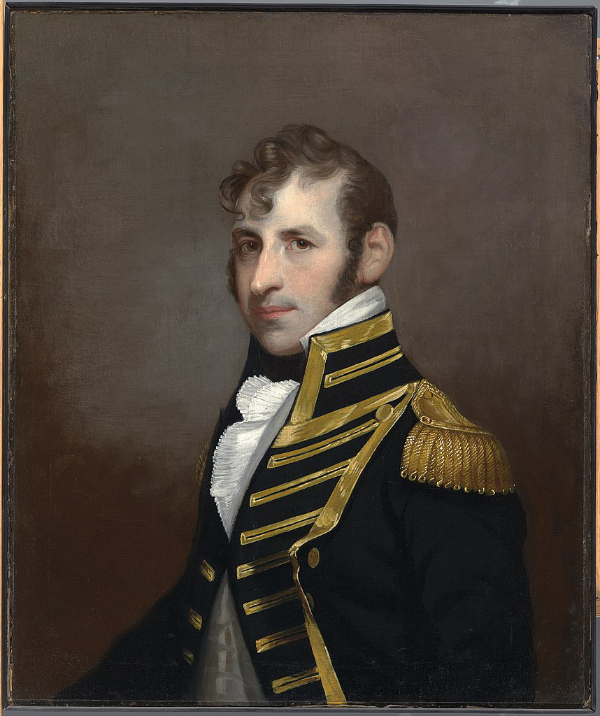
Stephen Decatur in a portrait by Charles Bird King between 1815 and 1825. (National Portrait Gallery, Public domain, via Wikimedia Commons)
The First Barbary War: Heroic Action at Tripoli
Decatur became a national hero in the First Barbary War. In February 1804, he executed a daring raid in the harbor at Tripoli that succeeded in burning the USS Philadelphia, which had been captured by the Tripolitans. His reputation was enhanced during a second attack on Tripoli in August 1804, when he led hand-to-hand fighting and captured an enemy gunboat. At age 25, Decatur was promoted to Captain, the youngest man in U.S. naval history to hold that rank.
The War of 1812: Capture of the Macedonia
In 1810 Decatur was appointed to command the USS United States, the ship on which he had served at the beginning of his naval career. He again distinguished himself in the War of 1812. Most notably, in October 1812 Commodore Decatur’s squadron captured HMS Macedonia and refitted it for use by the U.S. Navy.
In January 1815, Decatur’s ship the USS President was captured by the British after a spirited naval battle. Decatur was wounded and taken prisoner. He was held in a Bermuda prison until the end of the war, but was treated with respect by the British due to his stature.

Lieutenant Stephen Decatur Boarding the Tripolitan Gunboat during the bombardment of Tripoli, 3 August 1804. Oil painting by Dennis Malone Carter. (Naval Historical Center, Public domain, via Wikimedia Commons)
The Second Barbary War: Gunboat Diplomacy
The War of 1812 was followed almost immediately by the Second Barbary War, declared by Congress in March 1815. Decatur led a ten-ship squadron to the Mediterranean to secure the release of imprisoned American merchant seamen, end the payment of tribute to the Barbary states, and obtain favorable prize agreements.
En route to Algiers, Decatur captured the Algerian flagship Mashouda, killing its commander and taking more than 400 prisoners. Decatur’s “gunboat diplomacy” enabled him to obtain favorable treaties not only with Algiers, but also with Tunis and Tripoli. As a result of his success, he became known as “the Conqueror of the Barbary Pirates.”
Recognition by Congress, Death in a Duel
Decatur was revered as an American hero. He was presented with a sword in recognition of his service in Tripoli, and Congress awarded him a gold medal for his distinguished service in the War of 1812. He was appointed to the Board of Navy Commissioners in 1816.
Decatur died in 1820 at the age of 41 from a gunshot wound sustained in a duel with fellow naval officer James Barron. Decatur had served under Barron years earlier in the Quasi-War with France, but Barron had subsequently been suspended from the Navy and bore a grudge against Decatur for opposing his reinstatement.
Captain Thomas Macdonough (1783–1825)
Born in Delaware, Thomas Macdonough joined the Navy as a Midshipman in 1800 when he was just 16 years old. In the last year of the Quasi-War against France, he served aboard the USS Ganges, which captured three French merchant ships in the West Indies.
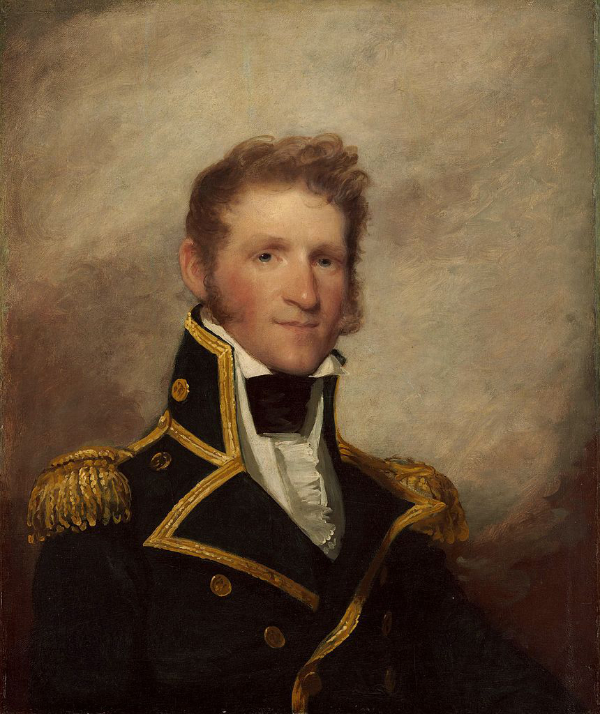
Commodore Thomas Macdonough in a portrait by Gilbert Stuart, circa 1815/1818. (National Gallery of Art, Public domain, via Wikimedia Commons)
The First Barbary War: With Decatur at Tripoli
In the First Barbary War, Macdonough served on the USS Philadelphia before it ran aground and was captured by the Tripolitans. He was reassigned to serve under Stephen Decatur and played a critical and heroic role in Decatur’s raid on Tripoli’s harbor in February 1804, which resulted in the destruction of the captured Philadelphia.
The War of 1812: The Battle of Plattsburgh
Macdonough was commissioned as a Lieutenant in 1806. Following a leave of absence from the Navy from 1810 to 1812, he returned to active service just before the start of the War of 1812.
In October 1812, he took command of U.S. naval forces in Lake Champlain, a strategically important waterway given the British military presence in Canada. To strengthen America’s naval defenses, Macdonough supervised the building of the USS Saratoga and the building and repairing of a number of other ships at the shipyard in Otter Creek, Vermont.
In September 1814, Macdonough engaged a British squadron led by Commodore George Downie in the Battle of Plattsburgh. Commanding the Saratoga, Macdonough outmaneuvered the British, killing Downie, forcing the surrender of the British flagship HMS Confiance, and destroying or capturing most of the remaining British ships. Macdonough’s victory forced the British army that had marched on Plattsburgh to return to Canada, and eliminated any British claim to American territory in the Treaty of Ghent that ended the war.
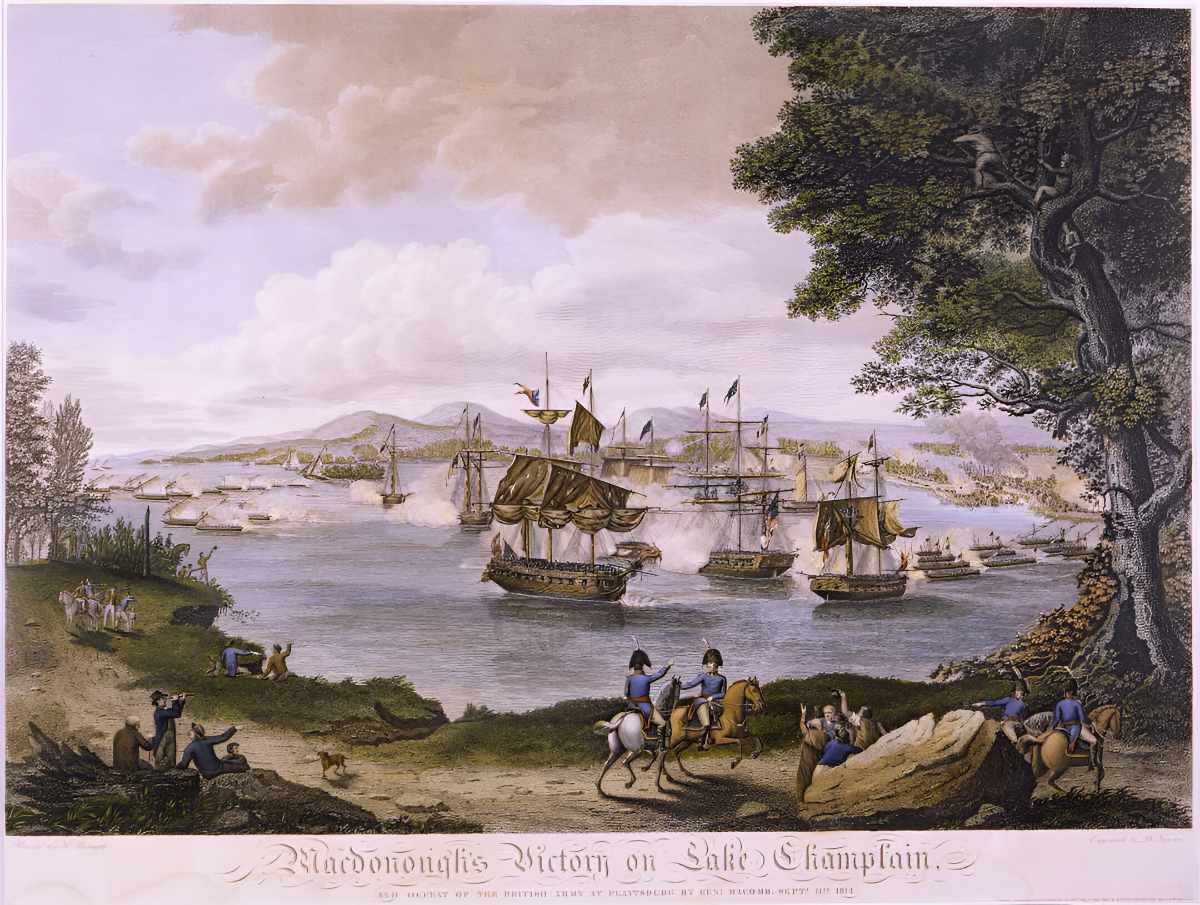
Macdonough's Victory on Lake Champlain and defeat of the British Army at Plattsburg by Genl. Macomb, Sept. 11 1814. Engraving by Benjamin Tanner, 1816, after painting by Hugh Reinagle. (Lake Champlain Maritime Museum Collection, Public domain, via Wikimedia Commons)
Gold Medal from Congress
For his success in the Battle of Plattsburgh, Macdonough was promoted to the rank of Captain and was awarded the Congressional Gold Medal. He continued to serve in the Navy until his death at sea in 1825.
A Gateway to Early American Naval History
Stephen Decatur and Thomas Macdonough were the most prominent of the “second generation” of American naval heroes, who served after the American Revolution. So they were obvious choices to be honored on the 2-cent 1937 Navy stamp.
This stamp and the others in the series provide a brief introduction to important figures, events, and places in American history. The United States has issued hundreds of commemorative postage stamps that tell interesting and important stories, and thousands more have been issued worldwide. Collecting stamps, especially commemorative issues, can be a great way to learn about history.
Copyright © Brian Lokker 2011, 2024. An earlier version of this article was published on HubPages.com in 2011 and was subsequently featured on HobbyLark.com.

